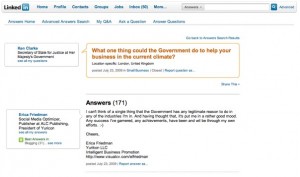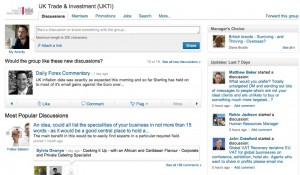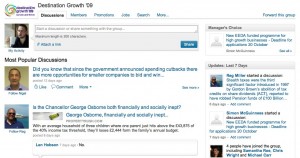Pinch, punch, first of the month.#
Am trying a thing to easily(ish) create anchor links at the end of paragraphs in these daily notes. That way I can point people directly to a specific nugget within a post. There is a very limited user need here, beyond scratching an itch, which is to try and replicate one of the ways that Dave Winer’s blogging⬈ works, and Lloyd tried a similar thing a while back⬈.
I’m aided here by the fact that I write my blogs posts in MarsEdit, a desktop app on my Mac, rather than the WordPress interface itself. MarsEdit lets me create macros assigned to keyboard shortcuts, so now when I hit ctrl-cmd-p, it plonks in opening and closing paragraph tags, and prompts me for the anchor id, which it then uses to spit out the necessary tags to make a clickable # sign at the end of the paragraph.
(A slight pain is having to type in the anchor text twice – once for the anchor and then for the link. Mistyping this will obviously lead to errors, but am not sure how to get around it.)
I think it works – try it out on this paragraph and let me know how much of a waste of time this was! #
What this hopefully will mean is that, rather than waiting until the end of the day to publish these notes, I can publish it after the first item is written, and then update it during the day. Having the anchor links means if I want to point to a specific thing before the end of the day, I can.#
Not a lot to argue about in this article⬈ on building “21st century digital government” – data and interoperability are jolly important. But the click-baity headline means that it’s presented as the only answer, and we know that – as important as data etc is – it’s isn’t the only thing organisations need to be focusing on. I don’t think anyone would argue that rather obvious point, but the danger is that some less informed folk might read this as being a ‘data will solve everything’ argument, meaning that the other stuff gets missed.
Basically, everything is complicated.#
I’ve ordered a new desk chair, on the recommendation of Ann Kempster⬈. Thanks Ann! This one isn’t too big, so won’t dominate the room, and most importantly, it won’t bankrupt the shareholders of SensibleTech Ltd⬈. I asked for suggestions on Bluesky and LinkedIn – feels as if questions like that are ideally suited to social networks. #
Speaking of LinkedIn, it does seem to be continuing its march towards replacing Xwitter as the best place to get work-related engagement going. Noticed a few people writing fairly lengthy piece as ‘posts’ rather than ‘articles’ – would be interested to know what difference this makes, as both require a click to read the bulk of the text. Might try an A/B test to check it at some point.
The URLs for posts rather than articles are very ugly, and it’s a poorer reading experience for people who aren’t logged in or have an account.
Another thought: posting these daily notes in their entirety to a LinkedIn post, rather than just linking to them? 🤔#
Here is one such LinkedIn post⬈, an excellent one from Adrian Lent, in which he proposes what those wishing to see radical change in public services ought to do:
I think history is clear on what works. Those who want change must come together, work out a shared vision of generalised reform and then press for it as determinedly as possible. In effect, creating a movement within the public sector for system transformation.
#
This is a lovely post from Jukesie⬈ about his love affair with libraries, and his inspiring decision to start volunteering. #
Steve recently started sharing his blogroll⬈ – a rather old school blogging concept of maintain a public list of blogs you like to read, to encourage others to find them and share theirs.
Was reminded of this when I came across this post from Dave Winer⬈, sharing an automated way of finding blogs from blogrolls, and then finding more blogs from those blogrolls, and so on – all thanks to a defined standard. Nice.
(I just noticed that one of Steve’s posts mentions Winer’s standard too – I must have missed that at the time!) #

 I’ve just started a LinkedIn
I’ve just started a LinkedIn 



